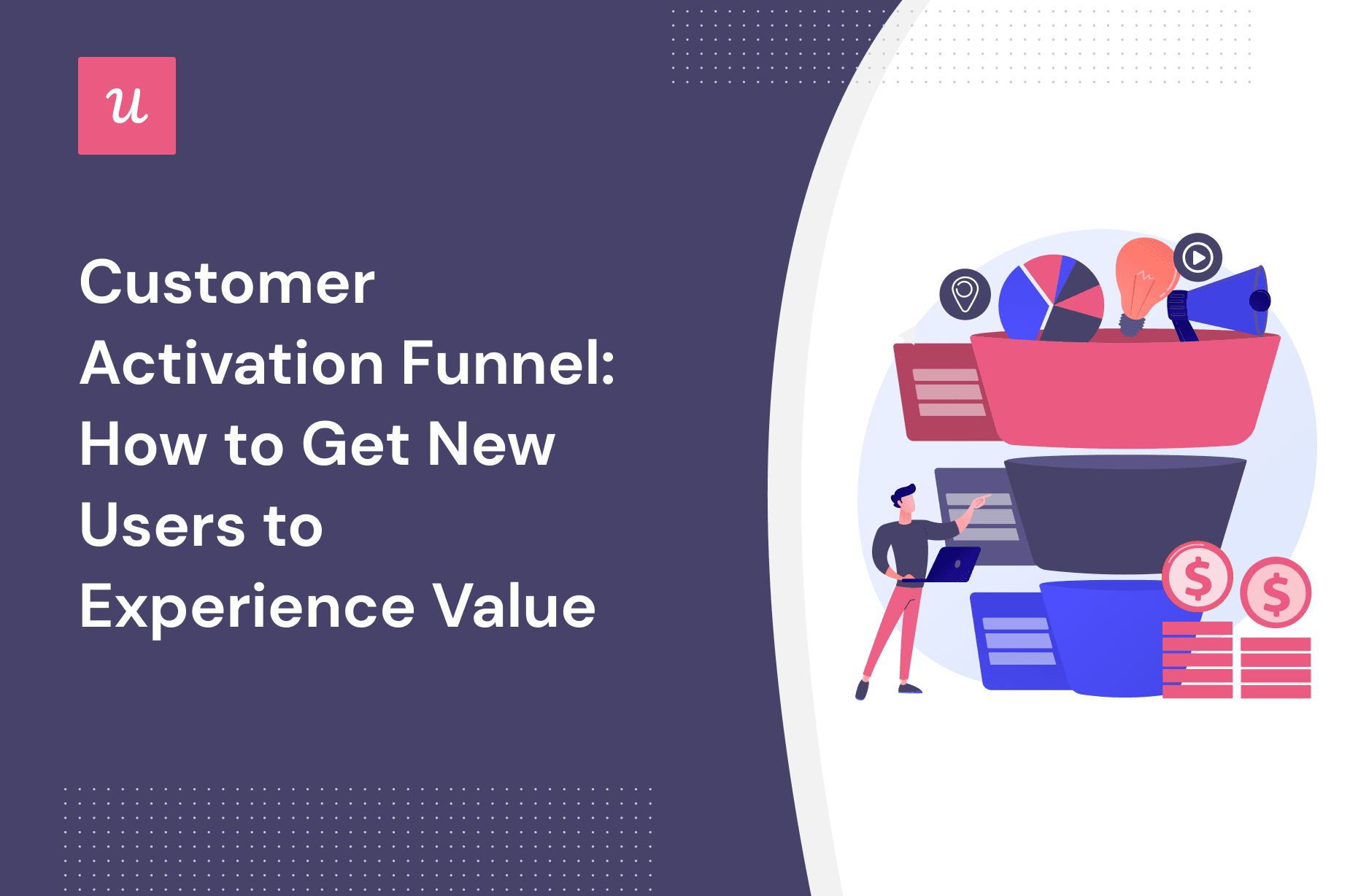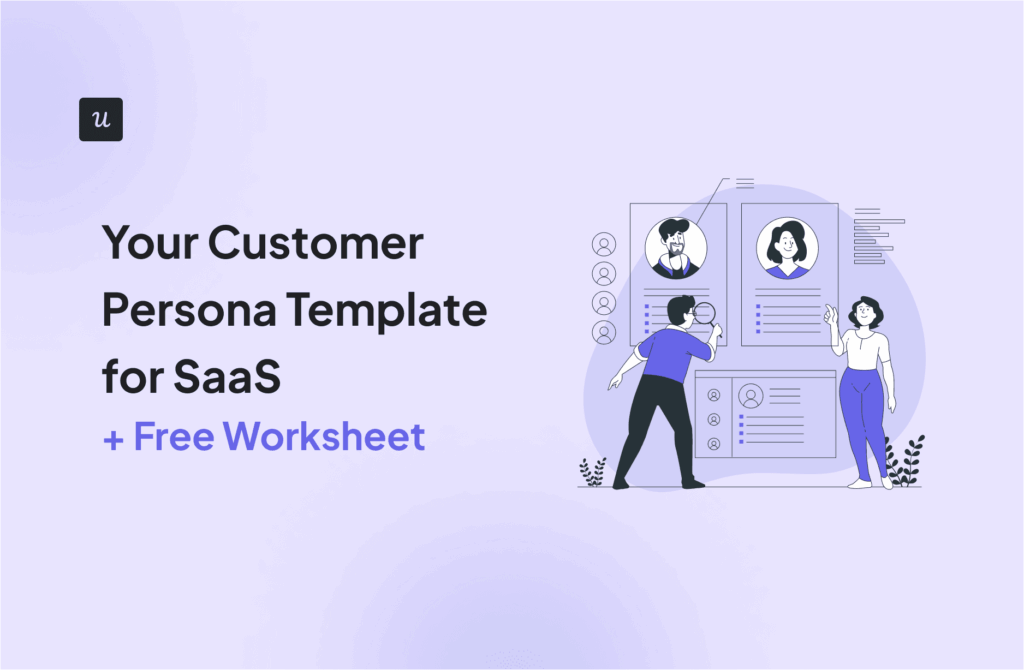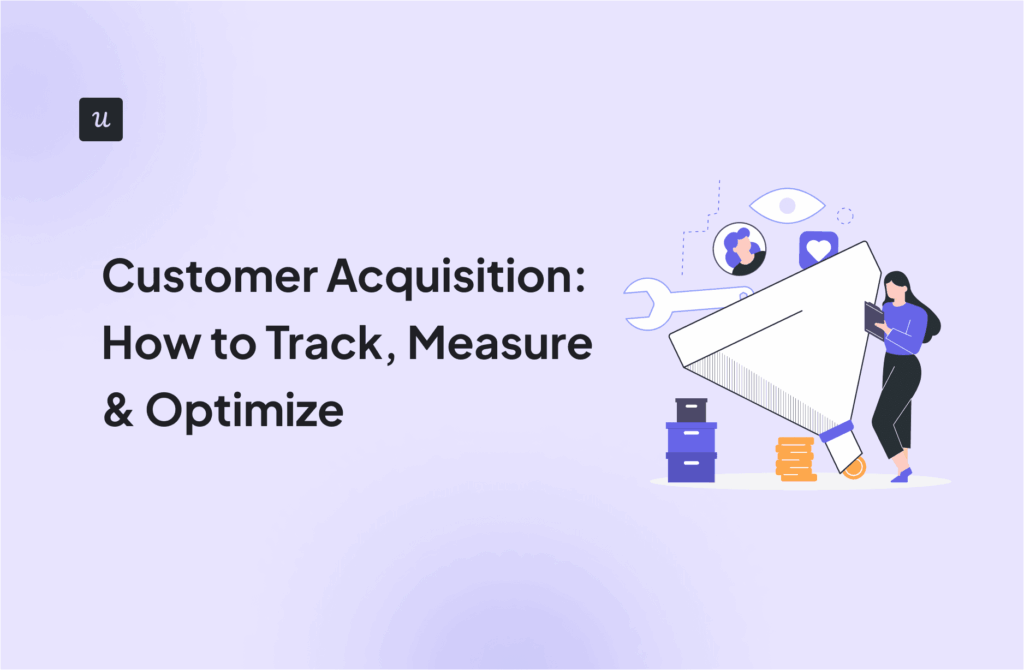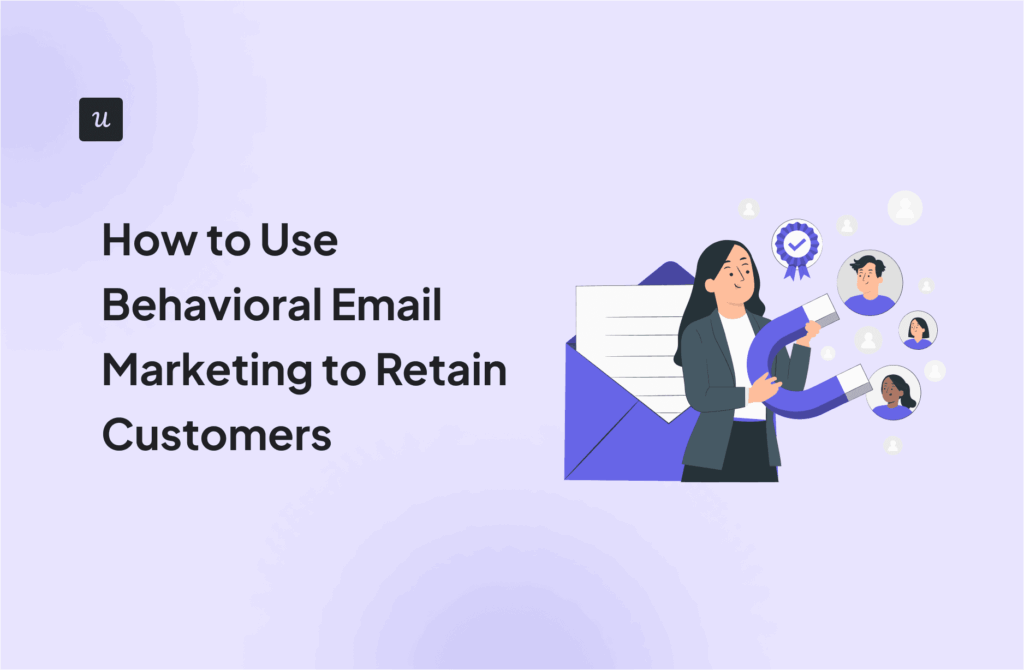
An effective customer activation funnel can be an extremely powerful way to channel new customers through your product and get them to experience value fast.
In this article, we’ll explore what customer activation is, how to unlock it within your own product, and the best tactics, techniques, and onboarding tools for the job.
Let’s dive straight into it!
Try Userpilot Now
See Why 1,000+ Teams Choose Userpilot

Summary of a customer activation funnel
- Customer activation is a term that describes the moment your users – both new and existing customers – start to experience value from your product or service.
- Activation is one of the most important metrics for product managers and SaaS owners to focus on (and get right). Why? Because it drives so many critical benchmarks: retention, adoption, conversion rate, customer lifetime value, customer acquisition, increased sales, and more.
- A user funnel is a concept that represents the entire customer journey. An activation funnel is very similar: it’s designed to boost activation rates and drive potential customers toward the activation point.
- So, how do you build an activation funnel in your own SaaS business? Start by understanding who you’re trying to activate: break down your prospective customers into distinct user personas (using customer data to personalize the experience is a proven way to activate users sooner).
- Map out their journey and identify activation points. Track your customers’ progress toward key milestones, and measure success as you go. The more customers achieve their activation goal, the better.
Getting users to the activation point is rarely straightforward. You’ll need some tips and tactics to succeed:
- Start by implementing a minimum viable onboarding playbook to give you a framework to operate from. You could also trigger step-by-step guides to demonstrate how they can move to the next stage to experience true value from specific features.
- Remember to keep your users engaged with gamification and targeted in-app messages. If your customers stray away from your product and start to churn, don’t despair: you can use webhooks as a targeted way to pull them back (and increase sales as a byproduct).
- No activation funnel is ever 100% straightforward: make sure you provide your users with a range of self-service support options to help them solve their problems (without bombarding your support team).
- Finally, remember you can use live demos to show (rather than tell) your customers how to experience value.
- Of course, none of this is possible without the right tool for the job: Userpilot is a powerful customer activation platform that’ll help you meet your product goals (at a reasonable price point, and without writing a line of code).
What is customer activation?
Customer activation is a term that describes the moment your users start to experience value from your product or service.
A useful thing to remember is the distinction between the potential value (i.e. the Aha moment) and users’ experiencing real, immediate value from using your key features to solve their problems.
Activated users are users who feel like they’re getting good value for money. That should be your ultimate goal to enable.
Get activation right, and you’ll have a better chance of motivating your existing customers to move to the next level of the customer lifecycle.
Why is customer activation important?
If successful product managers get one thing right, it’s the ability to focus on the highest priority, highest leverage activities.
Activation is absolutely one of those topics (although it’s rarely a linear process).
Why? Here are the main reasons:
- Activated users are far more likely to turn into paying customers.
- Customer activation plays an enormous role in keeping hold of your current users (i.e. retaining customers).
- Higher activation boosts product adoption.
- Successful activation can lower the cost of customer acquisition.
- Boosting the activation rate will increase customer lifetime value.
- Activation will lead to bountiful upselling and cross-selling opportunities.
What is an activation funnel?
A user funnel is a concept that represents the entire customer journey, from first finding out about your product, to becoming a paying customer, then a brand advocate.
An activation funnel is very similar. It’s designed to boost the activation rate and drive customers toward the activation point.
While the Pirate Metrics funnel below is extremely useful, it’s worth thinking about another metric: adoption (actually using a feature – or your entire product – frequently is key to product success).

Activation funnel vs sales funnel
Let’s break down the distinction between an activation funnel and a sales funnel.
The key difference is this: an activation funnel will take a user up to the activation point (where they’re experiencing value). That doesn’t necessarily mean they translate directly into them becoming paid customers.
Activation will lay the foundations for converting users into paying customers. But they’re not the same thing.
It’s worth remembering that the sales process (and therefore the sales funnel) extends far beyond the usual activation funnel.
How to create an effective activation funnel for SaaS business
In this section of the article, we’re going to explore how you can build an amazing activation funnel for your own SaaS business.
Let’s get into it!
Define your user persona
No product manager or SaaS owner can do their job effectively without a solid understanding of their target audience.
You need to make sure you are aware of their primary goals, biggest pain points and areas of frustration, and their key jobs to be done.
“Supposing is good, but finding out is better.”- Mark Twain
With enough user research to validate your understanding and gather data, you can better define a user journey that will tackle their needs.
One easy way to quickly define user segments is by gathering key information during a sign-up flow, a welcome survey, or on your landing page.

Map out the user journey
You won’t be able to identify opportunities for improvement unless you understand the current customer journey.
Figure out the key phases in the users’ experience, map out the activities that sit within those phases, and you’ll quickly identify the touchpoints that help boost activation.

Identify your activation point
The activation point is the specific moment a user first realizes the value of your product. Make sure you identify the specific touchpoint.
Of course, that means it’ll differ from one SaaS product to the next depending on your use case.
For example, in a CRM tool, it could be when your users successfully scan a list and identify an opportunity. For an email marketing platform, it could be when you import a database of critical contacts.
Set milestones
Next, you need to set clear activation milestones. These will help you understand how users are progressing toward the overall activation goals – and ultimately, help you monitor customer success.
How do you break this down?
Well, you could start by diving into individual feature engagement, or set up analytics to monitor specific events. Whatever goal-setting framework you run with, the critical thing is to have a focus.
Measure the success of your activation funnel
The strategist Peter Drucker said, “What gets measured, gets managed.”
You won’t be able to engage and improve the user experience without understanding what’s happening within your application (and progress toward goals).
Of course, you’ll want to understand the overall activation rate – but take the level of focus down a notch. Set individual in-app goals to build an even deeper understanding.
So, if the milestones we mentioned above reflect the activation point, goals would be all the touchpoints and actions on the journey the user will go through.
Best practices to get users to reach the activation point
Next, we’re going to dive into some best practices you and your business can leverage to help your users achieve their objectives.
Implement a minimum viable onboarding playbook
If activation is the overall goal, then an onboarding playbook is your roadmap to get there. It helps define exactly how you’re going to navigate your way toward your objectives.
A good onboarding playbook will set out:
- Specific and measurable outcomes
- Key tasks and actions
- Phases in the journey
- UX patterns to help engage your users

Use step-by-step guides to prompt engagement of key features
A proven way to drag your users toward the activation point is by building step-by-step guides.
A clear framework, with well-defined steps to success, will give a boost to any activation funnel. Make sure you leverage multimedia techniques to give yourself the best chance of inspiring action (and delivering a positive experience).
For example, some simple and engaging videos might do.

Add gamification elements to engage new users
Gamification is a concept taking the SaaS world by storm. In a nutshell, you create a more engaging process or funnel by adding interactive elements that help to ‘gamify‘ the experience.
The key to gamification is introducing elements of competition (or incentivization) to tasks the user needs to complete in order to become ‘activated’.

Build engaging customer relationships with in-app communications
Fantastic customer relationships can’t be fostered through marketing alone. In-app communication can be the most effective way to create an engaging, enjoyable experience.
It’s important for user activation for a number of reasons: it helps your users discover features within your app itself (rather than something like a blog post), and it boosts adoption.
You can’t just fire random messages at random intervals, though. You need to make sure you’re launching contextually relevant information that helps distinct user segments. Don’t show irrelevant content.
Some examples of in-app messaging:
- Tooltips
- Chatbots
- Modals
All of these will help you communicate with your customers in-app and set them on the right path. If you don’t know where to start, you can implement a minimum viable onboarding process.
Use webhooks to reengage inactive users who failed to reach the activation point
Your communication strategy needs to encompass other channels.
Here’s a great example: release announcement emails can help you reengage inactive users, who decided to leave your product because they felt like they were missing key functionality.
Automation is your best friend here: you can use webhooks (also known as callbacks).
Let’s explore a use case.
Say a user signs up for your product and engages with your welcome modal. Perhaps they try out a few features, but ultimately fail to reach the activation stage. You could use a webhook to trigger a separate email flow, with an aim to encourage them to engage with relevant features.

Offer self-service support to offer help when the user needs it
The journey to activation is never smooth. You need to make sure you have the relevant systems and structures in place to help your customers solve their challenges.
You can do that with a self-service support center.
Offering users multiple ways to tackle their issues (whether that’s visual guides, videos, documentation, or anything else) is a surefire way to reduce friction.

Use live demos to showcase new users your product
Showing is far more effective than telling.
Use live product demos to viscerally demonstrate how they can achieve their goals, tackle their jobs to be done, and ultimately reach the activation point sooner. It’s a sensible step for any business to follow.

How to drive user activation with Userpilot
Of course, none of this is possible without the right tool for the job. Userpilot is a product growth platform that makes it easy to create attractive user adoption experiences – without writing a line of code.
Let’s break down how you can use it to help boost activation.
Track product engagement with in-app analytics
Data is power: Userpilot has a powerful analytics suite, giving you the ability to dive deep into how users are interacting with various features.
By tagging features, you can easily monitor emerging themes within your app – and use that insight to proactively improve your activation strategy.

Use advanced segmentation for personalized in-app experiences
Your customers aren’t one homogenous group (and shouldn’t be treated as such).
Make the effort to understand the distinct customer segments, map them out, then target them with distinct interactions to create a truly engaging, personalized experience. That’s a key brand differentiator.

Build new user onboarding flows with various UI elements
You have various ways to engage your users within your app or by mobile. Choose wisely!
- Tooltips to drive feature discovery
- Modals for announcements
- Slideouts for invites
- Driven actions to prompt specific actions
- Checklists to drive customers forward
- Resource centers to help customers solve their own problems

And with Userpilot’s native mobile SDK, you can create targeted onboarding flows using slideouts, carousels, and push notifications without writing extra code.
Conclusion
So, there we have it!
A comprehensive breakdown of exactly what goes into an activation funnel for your users. Hopefully, you now have a much better understanding of what goes into creating an effective one within your own business.
If you want to build product experiences code-free, book a demo call with our team and get started! Check out the banner below for more details.







